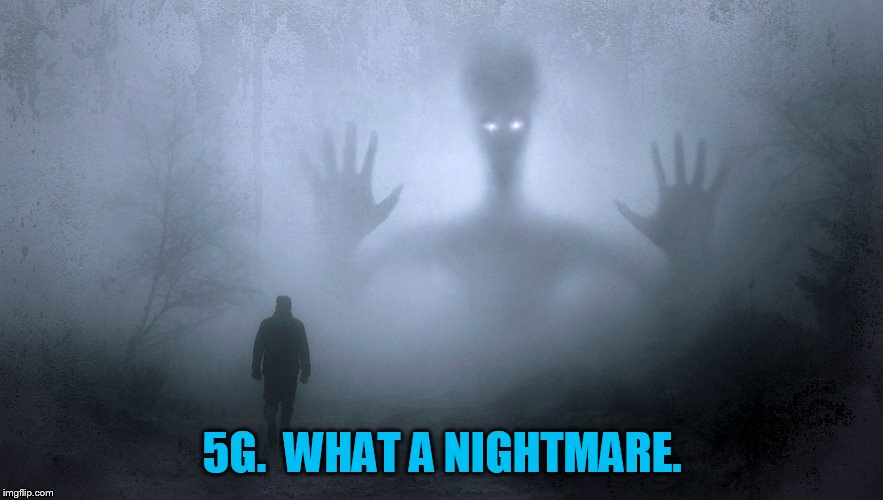 By B.N. Frank
By B.N. Frank
The Telecom Industry can’t prove that 5G is safe and many Americans don’t want it installed in their communities.
Since 2017, 200+ scientists and doctors have signed a petition demanding a moratorium on 5G technology installation due to biological and environmental risks
There is also no “safe” level of any source of cell phone or wireless radiation that has been scientifically determined for children or pregnant women.
Regardless employees at the Federal Communications Commission (the agency supposed to protect Americans by regulating the Telecom Industry) keep promoting 4G and 5G small cell technology and forcing its installation. No big surprise that the FCC is also being investigated for collusion with the Telecom Industry on federal legislation that eliminated municipal control over 5G installation.
CBS Sacramento aired a segment earlier this week about what’s happening there, “Research Firm Believes Verizon 5G Home In Sacramento May Not Succeed.”
Highlights include:
Sacramento is one of four US cities where Verizon began rolling out fixed wireless broadband last October and an analysis conducted specifically in Sacramento by MoffettNathanson Research suggests that nearly six months later, fewer than one tenth of one percent of people living in single family homes here have signed up for the service. The study concedes that while multi-family dwellings could boost the percentage, it was not possible to determine the number of subscribers in large apartment and condominium complexes.
[…]
The research revealed that the 273 small 5G cell sites installed by Verizon under an agreement with the city of Sacramento cover less than six percent of residential addresses in the seven zip codes analyzed — and of those eligible addresses, fewer than half have signed on with Verizon.
A previous analysis of Verizon 5G Home in Sacramento by EJL Wireless Research focused on the technical challenges facing the service which uses millimeter wave technology with a very short range. The author of that report estimated Verizon would need as many as 4,000 5G sites to adequately cover Sacramento.
While addressing the technical issues involving Verizon 5G Home, the MoffettNathanson analysis focuses more on the potential profitability of the service. The report concludes that Verizon’s assumption that wireless broadband is cheaper to deploy than fiber is flawed, and offers a model showing the cost of running fiber to subscribers’ homes system-wide could actually be 64 percent cheaper than installing small cell wireless.
ExtremeTech added their 2 cents on the Sacramento situation as well another embarrassing 5G situation in Louisville, KY: “Report: Verizon’s Fixed 5G Broadband Service Economically Flawed, Unsustainable.”
According to MoffettNathanson, only six percent of homes in Sacramento had access to Verizon 5G, with fewer than three percent actually subscribed. Of greater concern than the low subscriber numbers, however, is how few customers each small cell can actually support. On average, each small cell can only reach 27 local addresses.
This represents a real problem for companies hoping to rely on fixed wireless to roll out gigabit networks to customers at dramatically lower prices compared with the cost of running fiber-to-the-premises (FTTP). Companies have experimented with ways to reduce these costs for years; Google Fiber recently withdrew from Louisville, KY in disgrace after its attempt to use micro-trenching (extremely shallow trenches) to lay fiber backfired, leaving the city with cables popping out of the ground and an avalanche of asphalt repairs.
Last year a court case was won in Gateshead, England after 5G had been installed in street lamps, residents became sick, and some women delivered stillborn babies. Also last year, 5G was installed in New York City and residents reported that they were sick from it – as were their pets. Some even put their homes up for sale.
To continue with any of this small cell installation seems beyond insane for many reasons – including cybersecurity.
But it’s still legal to install it, so telecom companies are doing so – even though they have also been warning shareholders for many years that eventually they may be held LIABLE for deceptive practices and harm from their devices and infrastructure. Insurance companies must be keeping up on this, too, because they don’t cover telecom companies anymore.
So the nightmare continues in Sacramento, across the U.S, and around the world despite all the risks and increasing opposition.
More details about biological and environmental health risks from small cell technology are covered in various Activist Post articles including recently published: “5G and Health — It’s Time to Get Some Skin in the Game.”
For more information, visit the following websites:
- Wireless Information Network
- Americans for Responsible Technology
- 5GExposed
- 5G Information
- Center For Safer Wireless
- Center For Electrosmog Prevention
- EMF Safety Network
- Environmental Health Trust
- In Power Movement
- Last Tree Laws
- My Street, My Choice
- Our Town Our Choice
- Physicians for Safe Technology
- Scientists for Wired Tech
- TelecomPowerGrab.com
- We Are The Evidence
- Whatis5G.Info
